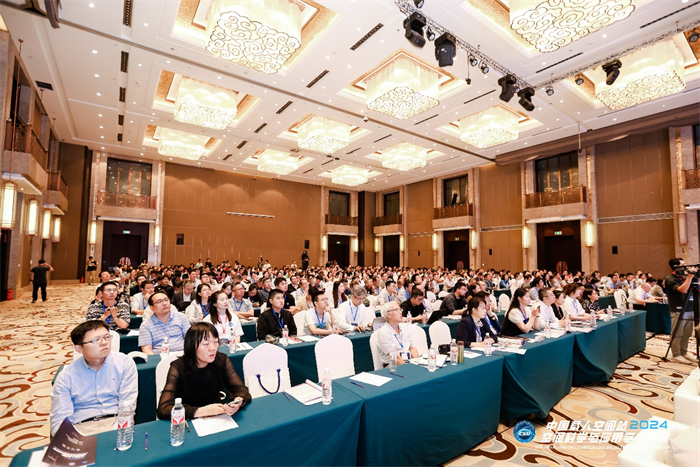Education
China's Space Station: making strides in research
The Chinese space station has made remarkable strides in scientific exploration, with over a hundred projects successfully implemented in orbit, as revealed during a recent academic conference.
The 2024 Academic Conference on Space Science and Applications of China Manned Space Station commenced on September 25 in Xi'an, Shaanxi province, located in Northwest China.

The conference arranges 6 disciplinary directions and more than 20 academic sub forums for academic exchange and discussion.
The conference was structured around six disciplinary directions and more than 20 academic sub-forums, fostering a platform for scholarly exchange and discussions. Drawing in over 600 experts and scholars from more than 160 research institutes, universities, enterprises, and various institutions nationwide, the event showcased the collaborative spirit driving China's space exploration endeavors.
In his address, Zhou Jianping, the chief designer of China's Manned Space Project, underscored the project's transition into an era of application and development, emphasizing the pivotal role of scientific and applied research within this new phase. He stressed the importance of advancing space science, technology, and applications in a comprehensive manner to propel the project forward.
Lyu Congmin, the chief designer of the space application system within the manned space project and deputy director of the Technology and Engineering Center for Space Utilization at the Chinese Academy of Sciences, presented the keynote report titled "Progress in Science and Application of Manned Space Station." According to Lyu, the space application system has conducted a multitude of experiments in orbit, totaling over a hundred scientific and application endeavors. Notably, experimental payloads and samples weighing nearly 1.8 tons have been deployed, with almost 100 samples retrieved from six batches via manned spacecraft, amounting to nearly 100 kilograms. These samples encompass a diverse range, including metal and alloy materials, functional crystals, non-metallic composites, as well as biological samples such as cells, proteins, and plants.
Ongoing scientific and application experiments on the space station have yielded significant research outcomes in areas such as space life sciences, space materials, microgravity fluids, and fundamental physics under microgravity conditions. The conference also featured presentations by 8 academicians and experts, further enriching the discourse on space exploration and applications.
Moreover, the conference unveiled the new Scientific Work Committee for the Professional Field of Space Application Systems in Manned Space Engineering, signaling a commitment to advancing research and innovation in this domain. Experts in attendance engaged in discussions on the strategic vision for China's manned space station space science and applications in the evolving landscape, focusing on cutting-edge technologies, high-quality development, and new productivity avenues in space science and applications.
Hosted by the Technology and Engineering Center for Space Utilization of the Chinese Academy of Sciences, with the support of Northwestern Polytechnical University and Xi'an Jiaotong University, this inaugural academic conference in the realm of space science and applications for manned space engineering in China sets the stage for future annual gatherings, fostering continued collaboration and progress in the exploration of space.

Copyright 1995 - . All rights reserved. The content (including but not limited to text, photo, multimedia information, etc) published in this site belongs to China Daily Information Co (CDIC). Without written authorization from CDIC, such content shall not be republished or used in any form. Note: Browsers with 1024*768 or higher resolution are suggested for this site.
Registration Number: 130349









